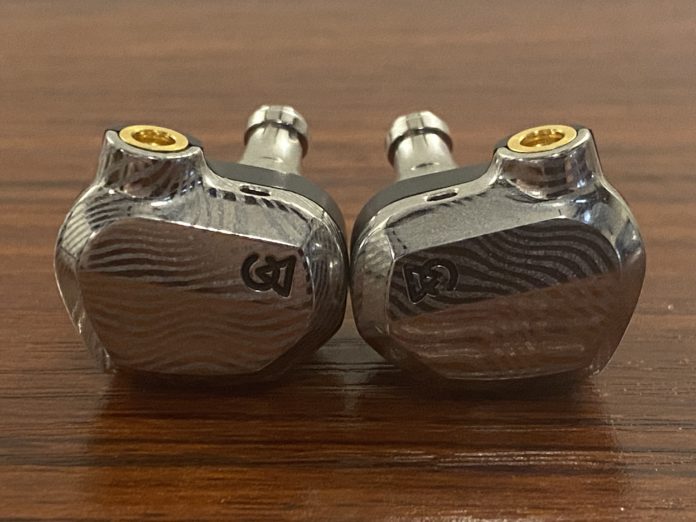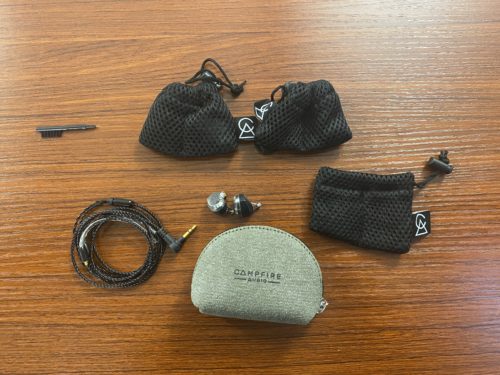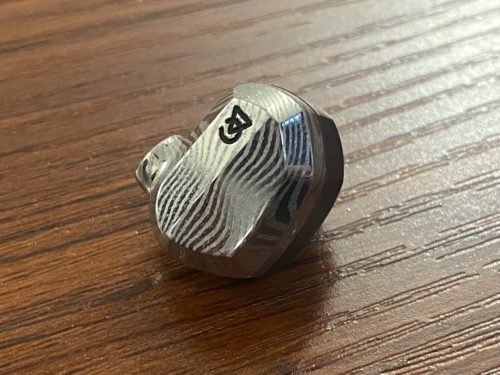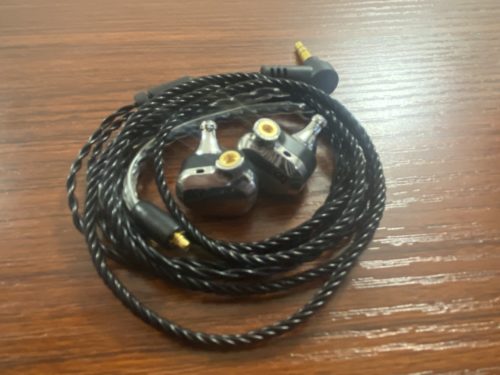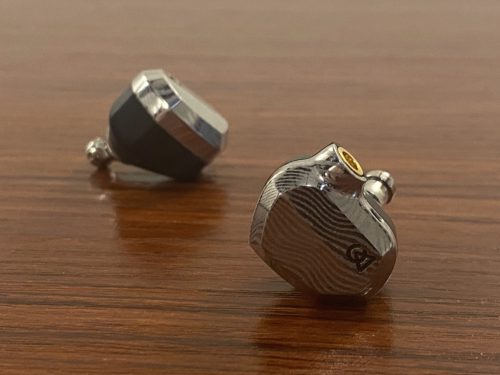It’s about time for a new Campfire Audio release. This time it’s a new limited release model available for $449. The Saber is the latest outing from Campfire, acting as an in-between option from last year’s Satsuma and Honeydew, and the Mammouth and Holocene. Due to its limited run, it could become a rarity, but does it provide any form of value outside of that?
What You Get
- Saber IEMs
- Grey Canvas Case
- Pure Litz MMCX Cable
- Ear Tips
- Final Audio Tips (xs/s/m/l/xl)
- Campfire Audio Earphone Tips(s/m/l)
- Silicon Earphone Tips (s/m/l)
- Campfire Audio Logo Pin
- Cleaning Tool
Look and Feel
The shape of the Saber’s main housing takes after the Honeydew and Satsuma, with its smaller ergonomic shape. I was a fan of this design when I listened to those models, and with the Saber’s silver wave style, it’s even better. Instead of looking like two pieces of hard candy, the Saber resembles a classier cosmetic approach. With the Saber adapting this build, it also shares the same level of comfort as those models too, which is a welcome attribute. As always for Campfire IEMs finding the right ear tip is half of the process, as these are pieces that you’ll need to work with in order to get the ideal fit out of them. Thankfully Campfire always supplies you with many options for you to achieve the right comfortability.
Design
On the inside, the Saber boasts a dual dynamic driver system. This features Campfire’s newly designed 8mm D8 and 6mm D6 drivers which help provide low and midrange frequency response, while a balanced armature relegates high-frequency content. That makes this configuration a three-driver hybrid which can be hard to find for this price. The dynamic units themselves also help deliver specific characteristics to the sound signature, such as warmth from the D6 using its titanium polymer diaphragm and the D8’s beryllium polymer diaphragm that helps supply depth.
Soundstage
You can usually expect a wide area of imaging with Campfire products, and the Saber is no exception. It communicates a range of spatial imaging that asserts the standard that Campfire adheres to, welcoming newcomers to its vast stage, and assuring those more familiar with the brand that this is a true Campfire IEM. The Saber presents its imaging with an expertly layered articulation of musicality, performing an articulate level of separation that makes each element appear distinct in the mix. In a stereo field, the Saber gives you enough space to easily localize the placement of instruments and effects within its outward bubble of sound.
I didn’t get much of a holographic effect as I got a feeling like the sounds were playing directly in front of me. You still get a good sense of depth, but the soundstage plays with a tighter distance that creates a more involved aura. For instance, while listening to ambient tracks like “Here and Now” by Infinity, the bed of synths provides a heightened sense of intimacy on a more surface level, but individual notes from pianos and strings still come at you from a more distinct origin.
Low End
For a lot of Campfire IEMs, the bass is one of their main attractions. Compared to other selections like the Honeydew and Mammouth, the Saber might feel a bit more reserved, but it doesn’t detract from the depth of its tone. Here you get a bit more dynamic response from the lows, portraying a more realistic envelope of bass timbre than its booming counterparts. There’s a respectable amount of tightness here, but it doesn’t skip out on that engrossing warmth that Campfire IEMs veer toward. A sharp pool of resonance extends the texture of the bass that creates this commanding presence without bleeding into the low-mids and clouding the frequency response in muddiness. It won’t deliver that slam you might be seeking, but the Saber still offers an impressive impact.
Mids
The Midrange of the Saber is wonderfully rich and lively, detailing the real meat of the music in a colorful way. Spatial imaging does its best to extend the mids and succeeds in that process by emphasizing the right frequencies to get the most out of their tonality. They leave enough headroom for instruments to shine, as the Saber picks apart its intricacies in a way to provide texture instead of cold analysis. While male vocals become a great highlight, female vocals can possess a more shrill timbre with a significant bump in the upper mids. This can sound engaging at times, but sometimes the Saber peaks a bit here and can’t showcase clarity as effectively. It’s the only area where the timbre can feel a bit lacking, but it shouldn’t distract from the other ranges of superb detail.
Highs
One of my favorite aspects of the Saber is how the treble jumps at you in all the right places. There’s a sense of finesse here that heightens the response and wakens the sound signature in a way that brings a sparkly finish to sound elements. The texture here is sweet and provides enough force to add that extra tinge of fidelity that surprises you consistently. No overt brightness or piercing frequencies can be heard here, only clarity and coloration.
Summary
Campfire Audio has a lot to offer in its ever-expanding library, and the Saber appears to be one of the few where you might miss it if you’re not paying attention. Although it might not compare with some of their more popular models, the Saber still has a sound that’s worth enjoying, as its technical prowess shines in its price range. Its design is a nice update from last year’s Honeydew and Satsuma models, and its 3D printed components are as solid as ever before. At the end of the day, the Saber is Campfire Audio pushing their standard, and it succeeds in pleasing fans of Campfire and newcomers alike.
| Pros | Cons |
|
|
The Campfire Audio Saber is available at Audio46.
MAJORHIFI may receive commissions from retail offers.


